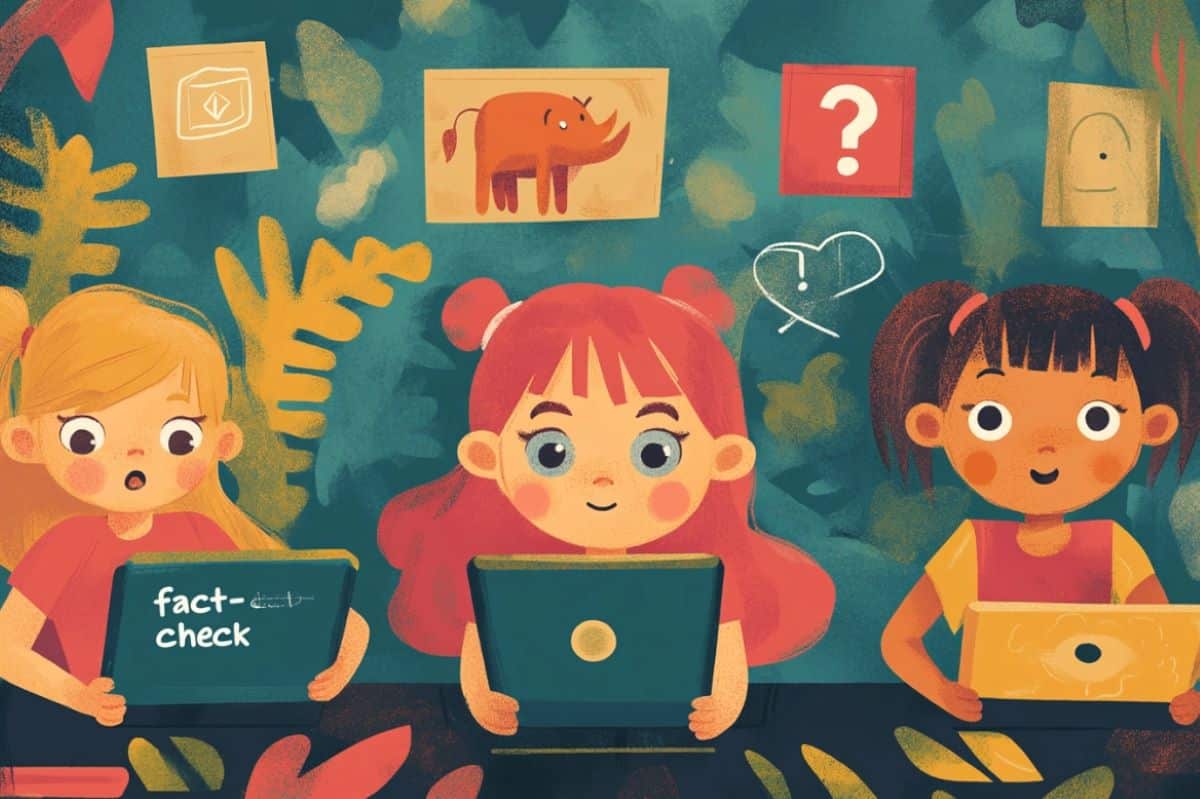Summary: New research suggests exposing children to limited misinformation online can improve their skepticism and fact-checking abilities. By encountering controlled false claims, children develop critical thinking skills essential for navigating the digital world. In a study, children exposed to unreliable information became more diligent fact-checkers compared to those in more accurate environments.
Researchers argue that equipping kids with online literacy skills is more effective than shielding them from all misinformation. With this approach, children may learn to assess digital content critically, setting them up for safer, smarter online interactions. Teaching young people to question information and verify facts could be key to navigating the modern web.
Key Facts:
- Exposure to misinformation may improve children’s fact-checking habits.
- Children in unreliable digital environments demonstrated increased skepticism.
- Researchers recommend discussing fact-checking with kids instead of “sanitizing” online content.
Source: UC Berkeley
In an era when online misinformation is seemingly everywhere and objective facts are often in dispute, UC Berkeley psychologists in a new study have presented a somewhat paradoxical partial solution: Expose young children to more misinformation online — not less.
Doing so in limited circumstances, and with careful oversight and education, can help children gain the tools they’ll need to sort fact from fiction online, said Evan Orticio, a Ph.D. student in UC Berkeley’s Department of Psychology and lead author of a paper published today (Thursday, Oct. 10) in the journal Nature Human Behaviour.
Orticio argues that, given children’s natural skepticism and early exposure to the internet’s boundless misinformation, it is crucial for adults to teach them practical fact-checking skills. Instead of attempting to completely sanitize their online environment, he said adults should focus on equipping children with tools to critically assess the information they encounter.
“We need to give children experience flexing these skepticism muscles and using these critical thinking skills within this online context in order to set them up for their future, where they’re going to be in these contexts close to 24/7,” Orticio said.
Orticio and his colleagues used a pair of experiments involving 122 children ages 4 to 7 to test how their level of skepticism changed in different online environments.
The first study exposed them to an e-book with varying degrees of true and false statements about animals. Next to a picture of a zebra, for example, some children were shown truths, like that zebras had black and white stripes.
Others were shown falsehoods about zebras being red and green. Based on that information, they indicated whether the claims were true or false. A second study simulated search engine results and posed similar animal facts and fictions.
Next, children evaluated the veracity of a new claim within that same digital context, this time about an alien species called Zorpies. On a screen were images of 20 so-called Zorpies. One of the alien’s faces showed that it had three eyes; the rest of the Zorpies wore dark sunglasses that obscured their eyes.
Children were then asked to decide whether all Zorpies had three eyes. But before making their final decision, participants were allowed to fact-check the claim by tapping any number of the aliens, removing their sunglasses and revealing their eyes. Since children knew nothing about the aliens, their skepticism could only come from their assessment of how reliable this digital platform was.
Researchers found that the children who were the most diligent about fact-checking the Zorpies claims were also the ones who saw more false claims about animals earlier in the study. Meanwhile, those who had more reliable environments with fewer false claims earlier in the study did almost no fact-checking. A computer simulation confirmed that the children in the more unreliable environments were more likely to debunk potential misinformation.
“Children can adapt their level of skepticism according to the quality of information they’ve seen before in a digital context,” Orticio said.
“They can leverage their expectations of how this digital environment works to make reasonable adjustments to how much they trust or distrust information at face value — even if they know next to nothing about the content itself.”
The project was born from an urgent need to understand how children are faring in an increasingly online world. Previous research has found that an estimated one-third of children have used social media by age 9, and that minors encounter health misinformation within minutes of creating a TikTok account.
Even platforms that are purportedly curated for young audiences, like YouTube Kids, have become spaces for toxic content and misinformation. That’s a particular problem, Orticio stressed, because parents may have the impression that these are safe places their kids can explore.
But as the new research shows, that may give a false sense of security and allow falsehoods and problematic content to go unchecked and be taken as true and acceptable.
“Our work suggests that if children have some experience working in controlled, but imperfect, environments where they have experience encountering things that aren’t quite right, and we show them the process for figuring out what is is actually true and not, that will set them up with the expectation to be more vigilant,” Orticio said.
Orticio knows that not every parent has time to constantly monitor a child’s media habits. Rather than trying to create the most sanitized corner of the internet, he said parents should have discussions with their children about how to check claims and to talk about what they’re seeing.
Having clear expectations about what a platform can and can’t deliver is also important.
“It’s not that we need to enhance skepticism, per se. It’s that we need to give them the ability to use that skepticism to their advantage,” Orticio said. “In our experiments, fact-checking was very simple. In real life, fact-checking is actually very hard. We need to bridge that gap.”
About this neurodevelopment research news
Author: Jason Pohl
Source: UC Berkeley
Contact: Jason Pohl – UC Berkeley
Image: The image is credited to Neuroscience News
Original Research: Closed access.
“Exposure to detectable inaccuracies makes children more diligent fact-checkers of novel claims” by Evan Orticio et al. Nature Human Behavior
Abstract
Exposure to detectable inaccuracies makes children more diligent fact-checkers of novel claims
How do children decide when to believe a claim? Here we show that children fact-check claims more and are better able to catch misinformation when they have been exposed to detectable inaccuracies.
In two experiments (N = 122), 4–7-year-old children exposed to falsity (as opposed to all true information) sampled more evidence before verifying a test claim in a novel domain.
Children’s evidentiary standards were graded: fact-checking increased with higher proportions of false statements heard during exposure.
A simulation suggests that children’s behaviour is adaptive, because increased fact-checking in more dubious environments supports the discovery of potential misinformation.
Importantly, children were least diligent at fact-checking a new claim when all prior information was true, suggesting that sanitizing children’s informational environments may inadvertently dampen their natural scepticism.
Instead, these findings support the counterintuitive possibility that exposing children to some nonsense may scaffold vigilance towards more subtle misinformation in the future.







